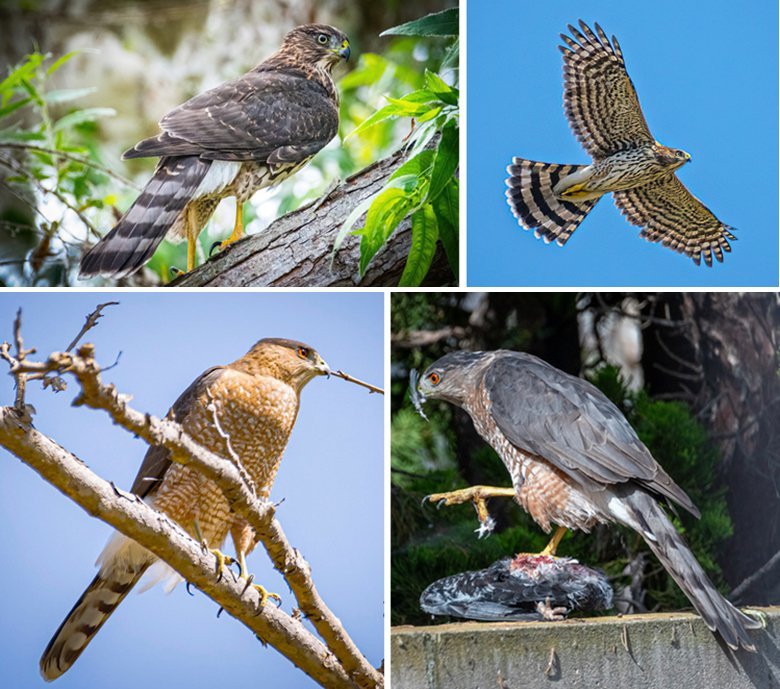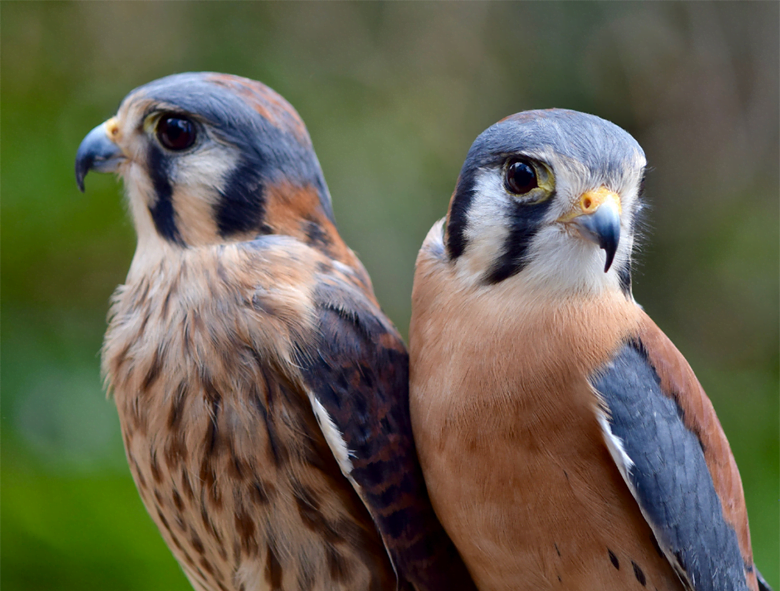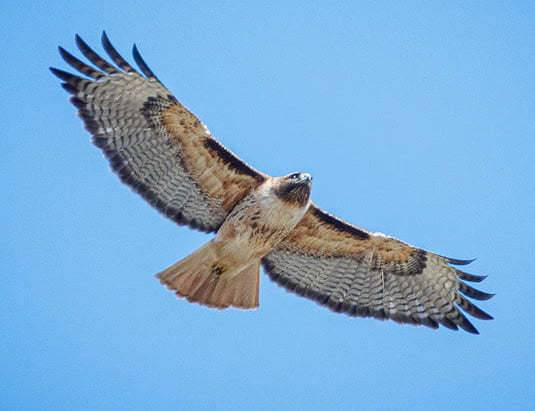
Raptor Habitat
The Urban Forest and adjacent, protected Raptor Foraging Area provide vital habitat for several raptors, also called birds of prey. The American Kestrel, Red-tailed Hawk and Turkey Vulture shown here are among the more common species observed hunting, nesting and dining.
How are Raptors beneficial?
Hawks and American Kestrels help to balance the food chain by eating fast-reproducing rodents and insects that could otherwise devastate ecosystems. Vultures are on nature’s clean-up crew. They rid the landscape of deteriorating carcasses and help stop the spread of dangerous diseases and bacteria.
AMERICAN KESTREL (Falco sparverius)

Vibrantly colored American Kestrels appear throughout North America year-round, as far south as Mexico in the winter, and throughout Canada in the summer. American Kestrels’ prey typically consists of large insects, along with small reptiles, birds and mammals.
Identify the more colorful males by their solid rusty back and contrasting blue-gray wings. Male and female each sport two distinctive dark vertical face stripes.
“The American Kestrel is our smallest, most abundant, and most vibrantly colorful Falcon. Watch for their dramatic aerial show of slow hovering mid-air facing into the wind, flapping and adjusting their long tails to stay in place before rapidly diving to seize unwitting prey in their powerful talons.”
Expert Birder Betty Kanne
RED-TAILED HAWK (Buteo jamaicensis)

Plumage of the Red-tailed Hawk can vary greatly. Once mature, the most identifiable features of this species are its red tail, brown head, white breast with a brown belly band and long, rounded brown wings extending about four feet. Red-tailed Hawks inhabit the U.S. and Mexico year-round and can breed as far north as Canada and Alaska during the summer. Red-Tailed Hawks typically consume smaller mammals, as well as birds, rabbits and small reptiles.
Watch for Red-tailed Hawks soaring above the Urban Forest and perched in the taller trees and snags (dead trees). They are the most common bird of prey observed above roadsides throughout North America.
TURKEY VULTURE (Cathartes aura)

Turkey Vultures are observed year-round throughout the U.S., and most commonly in areas with warmer climates. Watch for their red heads, pointed beaks and brown wings with a wingspan of six feet.
Using their keen sense of smell, these massive scavengers tend to dine on any animal remains that they can find, but they will sometimes capture live prey. Once a Turkey Vulture finds a fresh carcass, others will soon join in, picking the remains clean and thereby helping to keep our ecosystem healthy and disease-free.
“Turkey Vultures can live 20 years or more and congregate nightly to sleep in large communal roosts. In the early morning hours you may see them sunbathing in a tree with their wings spread out to increase their body temperature after a cool night.”
birder Betty Kanne
Thank you to contributing writer and Eagle Scout candidate Aidan Jardine. Discover more about the nearly 100 bird species observed in recent months in the HB Urban Forest on our Birding page.
Thank you for visiting, & please donate to the HB Tree Society for more forestation and habitat restoration.





